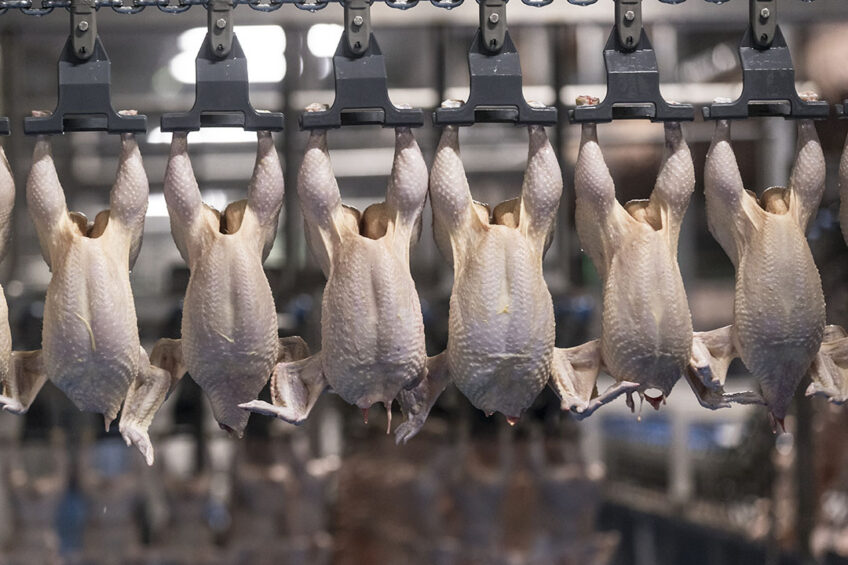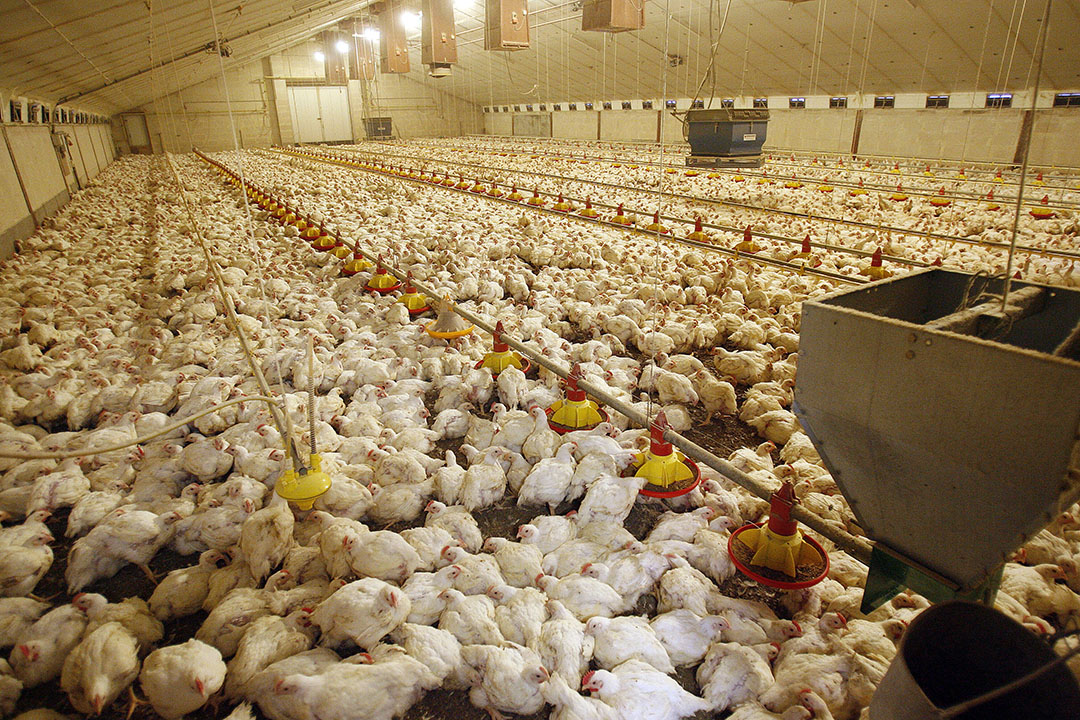Positive outlook for halal poultry market

Global sales of halal poultry are expected to rise in the coming years in and especially outside traditional Muslim regions. Although basic halal guidelines were formulated thousands of years ago, there are multiple visions on what poultry can be considered genuinely halal, resulting in major segmentation of this market.
All market analysts forecast steady growth in demand in the global halal meat market in the years to come. Leading New York-based consultancy, Straits Research, expects the market to reach US$375 billion by 2030, compared with only US$202 billion in 2021.
Asia-Pacific remains the biggest sales market for halal meat, but in recent years, growth has primarily been seen in non Muslim-majority countries. Multicultural populations in Southeast Asia and the Muslim migrations in Europe and North America account for a large part of the halal demand, the analysts state.
Market players also believe that the outlook for the global halal poultry meat market is mainly positive. “We believe the global halal poultry market will see more growth in the coming years,” says Zafer Gedikli, general secretary of the World Halal Council. “It is true that the demand for halal food continues to increase everywhere and poultry is an indispensable element in the whole halal market.”
Food for everyone
There are multiple factors behind the growth. Gedikli notes that the trend picks up pace as consumers become more familiar with the concept of halal and the values it brings to the market. This aids the popularity of halal poultry among non-Muslim customers, which can be seen in Europe and Russia. “This will result in a general increase [in sales] of Halal poultry products,” says Gedikli.
Mohammad Hussaini, VP of client development at the American Halal Foundation, is also confident that the global rise in demand for halal poultry is likely to gain momentum in the coming years. “The trend will accelerate for 2 main reasons. Firstly, non-traditional halal consumers, people who may not adhere to Islam, who prefer halal poultry due to the humane handling practices and overall quality of the product. Secondly, with the global dispersion of halal consumers into Western markets, like the EU, Russia, and North America, there is a move from halal being a speciality item only available at ethnic stores to a more commonly available product,” Hussaini says.
The consumption of halal poultry is also on the rise in the European Union and there are many reasons to believe this trend will continue in the coming years, according to Miran Ismael, lead auditor of the European Certification Centre for Halal. “It is largely driven by halal fast food, which is a booming segment. All these halal fast food chains rely on chicken as the main ingredient in the menu,” Ismael says, adding that in previous years the consumption of halal poultry was primarily driven by the kebab segment and growth prospects in this area have yet to be exhausted.
“Western consumers are also starting to embrace halal food. This trend is evident in the Netherlands, for example, where demand is growing. Halal is no longer a taboo for a non-Muslim European consumer, as it once was,” says Ismael.
No single standards
Halal meat is not a uniform market. There is no consensus on what poultry can be considered halal and what not. Currently, it serves as an umbrella term for poultry produced under several different standards. The original definition of halal – meaning lawful or permissible – and conversely, what is haram – meaning forbidden – comes from Islam’s sacred book, the Koran. The debates about dietary permissibility arise because the Koran verses addressing halal and haram are often vague and with little detail. Various parts of halal concepts have been debated, adjusted and evolved over past centuries. But the lack of a unified approach means that over a dozen organisations currently offer halal certification worldwide.
Gedikli says the basic rules are the same in most of the currently existing certification standards. However, there are crucial differences, too. In poultry slaughtering, for example, views differ on the permissibility of mechanical slaughtering and stunning. “Some halal certifying bodies allow mechanical slaughtering, including slaughtering by automatic knife, which is not an accepted halal method. Each bird must be slaughtered manually by a practising Muslim,” says Gedikli.

The other important issue is stunning. It is preferable and advisable to slaughter animals without any form of stunning. If it is essential, water bath stunning is the only acceptable method before slaughtering. On the other hand, controlled atmosphere stunning (CAS) or other stunning methods are not accepted at all, states Gedikli. “We believe that water bath stunning will also be phased out as an allowed method, as many processing facilities in the world have already successfully shown that it is possible to slaughter and process large numbers of birds without any stunning,” states Gedikli.
In general, companies are advised to invest in non-stunning slaughtering machines and equipment if they want to be halal certified. Currently, every halal market has its own rules, with some certificates opening more doors than others. The most preferred halal certificate is the one that shows that the birds are manually slaughtered and without stunning, says Gedikli.
The differences between the various halal certification schemes are essential to consumers, says Hussaini, adding that the widely accepted American Halal Foundation certification tries to inform consumers about the differences. In doing so it promotes their own ground rules thus ensuring global acceptance of their strict standards. “Other certification authorities that offer the best opportunities for companies in their jurisdiction are government authorities that regulate halal standards for specific countries, like JAKIM (Malaysia) and MUIS (Singapore),” Hussaini says.
No haram feed
While there is a lot of focus on processing in halal poultry production, feed is also essential to meet the criteria. That said, there is no unity about the status of halal feed in the Muslim world. For example, in Malaysia’s JAKIM’s Halal Certification Procedure Manual, animal-meal-based feeds are categorised as uncertifiable products. As not all certification bodies provide feed certification, this part of the supply chain is sometimes overlooked. A study by the Federal Agricultural and Marketing Authority and Universiti Sains Malaysia in 2010 found that 40% of feed manufacturers in the country use mixed animal-based materials in animal feed, thus creating doubt about the halal integrity of animals fed with such feed. As a result of the scandal, animals fed non-halal feed were deemed haram by the Malaysian National Fatwa Council.
Basically, the feed must also be ‘clean’, meaning no banned substances, like pork-related products or GMOs. However, a relatively soft approach is also possible. In theory, poultry feed with non-halal ingredients can regain its halal status. “Certainly, the feed of animals is very important. Producers must ensure that the feed they use comes from reliable sources and is not mixed with non-halal ingredients. If the birds are fed unclean (najis) feed, they must be isolated and consume clean feed for three days. They are considered fit for consumption after this isolation period,” Gedikli says.
However, in several markets in the Middle East, Northern Africa and Central Asia, ensuring that all feed components are halal can be challenging as the supply chain is not always entirely transparent.
Cost matters
Poultry farmers admit that meeting the strictest standards can be problematic. In many countries, stunning remains mandatory. In addition, manual slaughtering may also be a daunting task, especially for large poultry manufacturers. “We have processing facilities that slaughter 400,000 to 500,000 chickens daily. It would be almost impossible to get enough employees to slaughter such a number of chickens manually,” Miran says, adding that this would increase costs tremendously. “Slaughterhouses need to catch up with growing consumption, and consumers want affordable food.”
Overall, the market players believe the existence of different halal certification programmes is justified since they could meet the requirements of all categories of customers. Some Muslims are ready to pay more for products produced according to the strictest requirements, while others would opt for cheaper versions. However, halal chicken is not only about proper slaughter. Miran states that the main idea is that the poultry must be pure, which also means raising birds with a different philosophy. In fact, the entire production chain, from the first days of life, needs to be scrutinised.
“If one day a single [halal] certification standard were to be developed, it should cover everything and deal with long-standing issues in the entire poultry industry, not just what the halal segment deals with,” Miran says, adding that the current state of the global poultry industry largely contradicts the very concept of halal food. “We no longer consider the chicken an animal, more like a clone. In Islam, it is important to care about the animal. For example, it should not see the knife before slaughter. It should also not see the blood – meaning you must clean the entire place. These all are fundamental aspects.”
Some factors, however, could derail the projected growth in the halal poultry market. Miran expressed concern that new regulations discussed by European officials aimed at raising the popularity of a vegan lifestyle or promoting lab-grown meat could imperil the conventional livestock industry, and halal poultry is no exception. Providing that no such efforts are made in the coming years, Miran believes that the halal poultry meat market in Europe should continue to grow.












